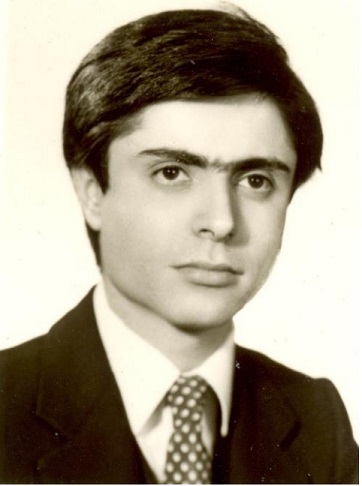The Superconducting Super Collider *Note early start time*
IEEE Southeastern Michigan: Chapter VIII (EMC)
Southeastern Michigan IEEE EMC Chapter technical meeting.
YOU MUST PRE-REGISTER FOR THIS MEETING TO GET THE ZOOM LINK


Sponsor: Southeastern Michigan IEEE EMC Society. We will have a drawing for 3 Amazon Gift Cards after the presentation. You must be present to win.
Date and Time
Location
Hosts
Registration
-
 Add Event to Calendar
Add Event to Calendar
Loading virtual attendance info...
Speakers
 Cyrous Rostamzadeh
Cyrous Rostamzadeh
The Superconducting Super Collider
The Superconducting Super Collider, the largest scientific project ever attempted fell to the axe of Congressional budget cutters in 1993. The SSC was an epic project that ended in failure. An accelerator that would collide high-energy protons, the SSC’s ring was to be 87.1 kilometers in circumference, circling the small town of Waxahachie, Texas, 48 kilometers south of Dallas. At 20 TeV — close to the regime of ultrahigh-energy cosmic rays—it was to have 20 times the collision energy of any existing or planned machine; it would have had five times the energy of even today’s LHC collisions. That design had only one tenth the beam luminosity of the LHC, but because of its higher energy, enough
to have found the Higgs and with the higher energy necessary to detect what, if anything, lies past the Higgs energy, such as supersymmetric or dark matter constituents. When canceled, about 20 percent of the SSC was complete—specifically, two dozen kilometers of tunnel had been drilled with 17 access shafts, and 18,600 square meters of buildings erected. Over $2 billion had already been spent, mostly by the DoE, but also $400 million by the state of Texas.
The U.S. has yet to stride again its own once prominent footsteps; but perhaps worse, it no longer dares to dream in color. Whatever the future for high-energy physics the U.S. and the world, the hulking beast that would have been the Superconducting Super Collider will not soon be forgotten
Biography:
Cyrous Rostamzadeh (Senior Member, IEEE) received the B.Sc. degree in physics, and the M.S.E.E., ARCS, and DIC degrees from the Imperial College of Science and Technology, University of London, U.K. He was with National Semiconductors, Grunding Corporation, Super Conducting Super Collider Laboratory, General Motors, Ford Motor Company, and Robert Bosch LLC as EMC Technical Specialist. During the
summer of 1990, he participated in the design and development of high power SSCL quench bypass switch with the Massachusetts Institute of Technology, Cambridge, MA, USA. In 1992, he received Post-Doc Particle Accelerator Physics Training at Stanford University, Stanford, CA, USA. He has given numerous EMC seminars and training courses to Bosch engineering associates, IEEE SE Michigan EMC Chapter, U.S.
universities, and international EMC organizations. He was a Keynote Speaker at the European Space Agency (ESA) Florence, Italy, in March 2009. He has authored or coauthored 59 papers with IEEE EMC, IEEE PAC, URSI-GA, and ASEE, and has four awarded patents and one pending, Cyrous was the recipient of the 2015 IEEE Region 4 Outstanding Professional Award for significant contribution to the engineering profession.
He is an active member of IEEE EMC TC-9 Computational Electromagnetics Committee.
He is an iNARTE-certified EMC and Product Safety Engineer.
Email:
Address:Michigan, United States
Agenda
5:00 Networking and Zoom setup
5:15 Presentation
7:15 End
Chapter website: http://www.emcsociety.org
To be added or removed from the Southeastern Michigan IEEE EMC email list, please send an email to scott@emcsociety.org with ADD or REMOVE as the subject.

